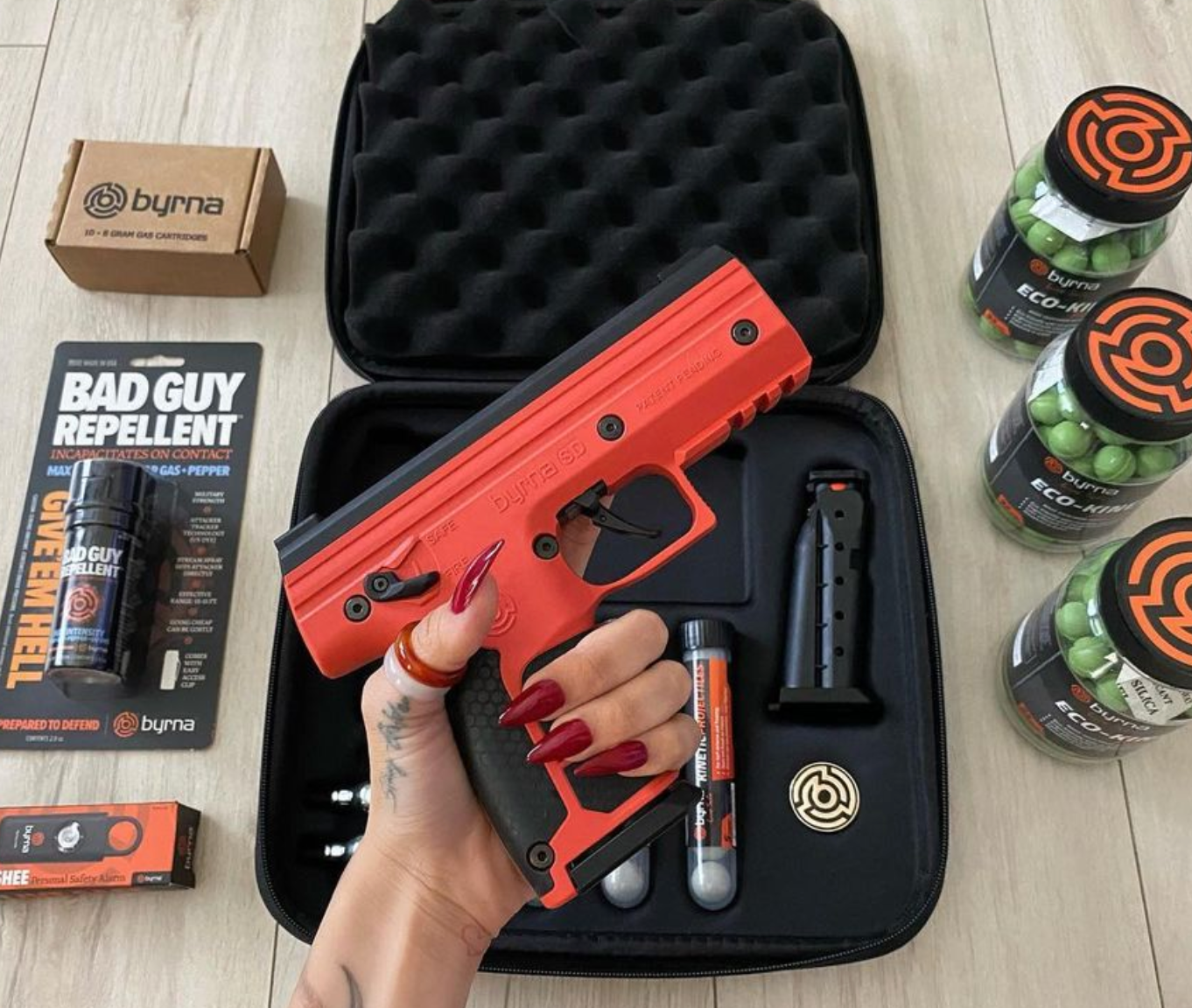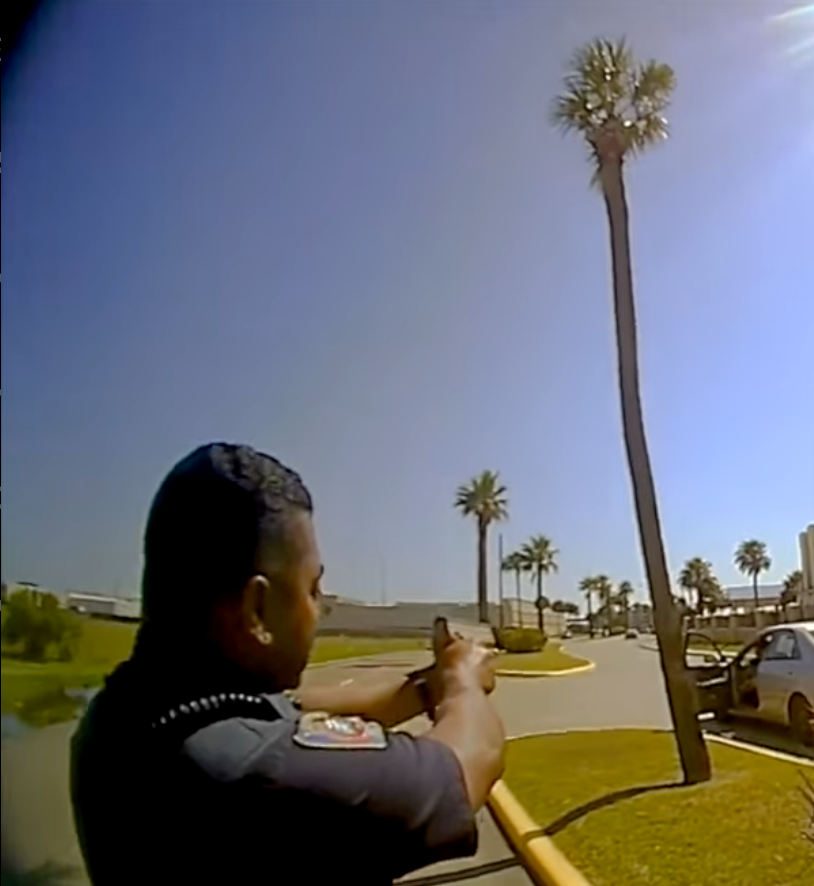
When you see a bear on your trip, your focus flips fast. You might reach for bear spray. But remember that Canadian law sets exact requirements on how you carry and store it. Many hikers remain unsure about how best to pack the can, so we can sort that out now.
You should follow the law first to stay safe. Federal and provincial codes explain where you can carry spray and how you can use it. You'll feel calmer on the trail because officers and judges view you as a responsible traveler.
The regulations change from one province to the next, and they treat bear spray differently from normal pepper spray. Some lawmakers want to shield wildlife and city residents, so they limit sales in towns and spell out how far from a road you need to be before you arm the can.
Let's talk about everything you need to know about owning bear spray in Canada!
Table of Contents
What Laws Are There for Bear Spray?
The existing Federal law in Canada treats bear spray as a pest control product, and Health Canada expects you to respect that classification.
The relevant Pest Control Products Act outlines what you can do and what you need to stay away from, so you have a pretty solid grasp of how to stay legal each time you pack a can. The good news is that you can readily pick up a can at almost any outdoor shop. The product on the shelf has to meet a few basic standards. The visible label needs to state that the spray is for animal use only, and it needs to stay on the can for the entire life of the product. These small requirements protect you, other people, and the wildlife you hope to deter.
Some real problems start once you choose to carry bear spray through a city. Canadian police treat that canister as a possible weapon under Section 90 of the Criminal Code, so you might face a criminal charge that surprises you the minute you step off the trail. Plenty of urban bylaws vary from place to place, and some of them attach very significant fines to just having it with you.

Most provinces add their own twists as well. Saskatchewan, for example, now blocks bear spray in any urban public space, and the fine can reach 100 thousand dollars. Other regions have started to talk about similar measures, so the local rulebook may change before your next trip.
Local officers may also seize your spray immediately if they suspect misuse. This particular power shows up far more in towns and cities where a real bear sighting is close to impossible.
The canister size is limited, too. Ottawa sets a maximum volume that tries to stop improper use while still giving you enough force to turn a charging bear away. We recommend you shop within those limits, and you'll avoid any extra paperwork at checkout.
We should all remember that the capsicum inside the can is strong enough to injure people seriously when you deploy it carelessly.
How Saskatchewan Rules Changed in 2024
Saskatchewan tightened its bear spray regulations in March 2024, and the change affects urban areas first. Malls, downtown sidewalks, city parks - every one of them now sits inside a designated restricted area for all visitors. If you still toss a can into your backpack before a trip to the farmers market, you now might get a hefty ticket from authorities.
Police also watch for tampered labels very closely. Scraping off a label or painting over the bright logo may seem like a practical idea at the time. But the law treats that move as a second offence with harsh consequences.
The penalties climb fast for everyone. A single misstep can push the fine toward 100,000 dollars, enough to wipe out a holiday budget and then some. You really shouldn't carry a can in restricted areas, and you might see that figure on your citation before you even finish explaining yourself to officers.
These limits stay inside city limits for now. Remote farms, northern camps, and backcountry trails follow a different set because wildlife concerns change once you leave pavement behind you.

Trained wildlife users still qualify for an exemption under today's guidelines. The list covers conservation officers, hunters, and experienced hikers. People should always buy the spray, drive straight to their trailhead, and keep the receipt in their pack for reassurance during adventures.
The province acted after police logged more than 3,000 bear spray assaults over five years, and nearly none of these cases involved a real bear in any situation.
Lots of outdoor travelers now map their routes with extra care and attention to the requirements. For instance, a family that starts in a rural cabin, cuts across Regina for fuel, and ends the day in Prince Albert National Park needs to stow the can out of reach while the car rolls through city streets at any time.
In December 2024, the legislature widened the net again with a more comprehensive street weapon bill, and bear spray remained front and center in that debate between lawmakers.
Why You Need Proper Storage for Bear Spray
Some new provincial rules in Saskatchewan now limit bear spray in towns, so you need to move the can straight from the shop to a safe place once you buy it. Always check which zones the rule covers before you leave the counter, and maybe give yourself a quick review of anything that may change along your way.
Because of these rules, you'll need to carry and store the can in a way that aligns with public safety checks. When you match those checks, you feel a bit calmer and can appreciate your trip instead of worrying about paperwork or fines.
The police can now seize any spray that sits loose in public. The entire Safe Public Spaces Act gives them that power to minimize problems in cities and towns. You should follow the rule each time you step outside, or you might watch an officer drop your can into a collection bin.
At home or in camp, please place the spray where kids can't reach. Those accidents slip in when you rush. We should set the can in a cool, shaded place, far from heaters, campfires, or direct sunlight that could make it swell or burst.
Make sure to store the spray close to your meal area, yet never right beside your food. A basic locked bin gives quick access while it stops mishaps that turn dinner into a clean-up job.

Storing it correctly keeps the nozzle working at the time you might need the spray. With just an effective setup, you dodge stress and lower the danger for everyone near you.
Parks Canada lists extra tips you might want to read before your next outing. They always say to stash the can in a safe but accessible place. The exact advice can change with the season or the park, so sort that out early and save yourself a late-night scramble.
Always watch the temperature. Extreme heat waves and deep cold can drain the can's pressure. The back seat of a hot car may look safe. But it can ruin the spray without warning.
Some town bylaws also touch on bear spray, and each one can differ. You should check local rules every time you cross a city line, particularly when the stop lasts only an hour.
These rules help guarantee that bear spray stays a tool for wilderness safety, not a street weapon. Storing it correctly keeps it out of the wrong hands and ready for the right situation.
How Do You Use Bear Spray Safely?
You should carry bear spray only if you're going to draw it fast. Make sure the can sits on your belt or pack strap, right where your hand naturally rests, so you can grab it in a heartbeat. If a bear steps out of the brush in front of you, those few saved seconds may just make the difference between a close call and an injury.
A quality holster gives you that speed, and you really do want every bit of it. Rough trails bring sudden surprises, and any delay while you sort through loose gear sharply cuts your margin for safety. We need to form the habit now, and you raise your odds when a situation hits without warning.
Before every single trip, take a moment and read the label. You want at least a 7-second spray time and a reach of roughly 30 feet. Most well-known cans meet that bar, yet you should still confirm it because some brands hide the expiration date in tiny print you can miss.
If a bear stays close instead of moving off, get ready to spray. You should pop the safety clip with your thumb, set your hands on the can for steadier aim, and tilt the nozzle a touch downward toward the face. That basic sequence feels awkward in camp, yet it becomes second nature after a few practice runs.
Wait until the bear moves inside about 30 feet, then press the trigger for a two or three-second burst. That short blast forms a dense cloud that the animal will have to cross, blocks vision, and gives you a little extra room. Just stand firm with feet shoulder width apart so recoil doesn't push you off balance, and keep your eyes on the target the whole time.

Always watch what the bear does next. Many turn at the first hit. If not, fire another quick burst. Keep wind direction in mind, because a sudden gust can roll the spray back into your face, so shift your body a half step to let the wind carry the cloud toward the animal rather than toward you.
Don't coat your clothes, skin, tent, or pack with bear spray. This approach fails every single time, and the formula is roughly eight times stronger than pepper spray for people, so you would only hurt yourself and waste a can in the process.
Park staff remind visitors to stay calm around bears. Speak in a steady, normal voice while you back away slowly. A quick dash flips the chase switch in the bear, so save the spray for the point when the animal refuses to leave and starts to advance.
Try practicing at home or in an open field before your trip and repeat the drill a few times. The muscle memory you build now may shave a few seconds off your response later, and those seconds can matter significantly when claws and teeth enter the picture.
Follow the Bear Spray Rules in Canada
You definitely need to watch the regulations in every part of Canada when you take bear spray with you, because each province and territory sets its own standards, and if you miss even one detail, it can spoil your trip right at the trailhead.
The regional laws vary quite a bit, so you might experience delays at checkpoints that may throw off your schedule.
When you drive, please store the can in the factory box. The label needs to stay visible to show it is intended for bears, not people. That basic proof typically draws the line between legal protection and a weapons charge.
All airlines draw a hard line. You can't place bear spray in carry-on bags, period. Some carriers accept it in checked luggage while others reject it outright. Do check the Canadian Air Transport Security Authority site before you book, and you'll avoid last-minute surprises.

Next, look up the local guidelines for your trail and any border you're going to cross. The customs officers may take the can if they think you're going to use it on people or if the regulations change on the other side. Please hold on to the receipt so you can show that the spray was recently bought for wildlife safety.
The province of Saskatchewan updated its stance in 2024. If you carry bear spray in an urban space, you could now face fines as high as 100,000 dollars. Many residents may still buy it but need to store it at home unless they head for the backcountry. The province reacted after a rise in improper use inside city limits.
Local city policies can still blindside you, and a quick walk across a boundary might trigger a substantial fine.
The city of Saskatoon plans to go even a step beyond. The new bylaw would let police seize bear spray in public when they believe it could become a threat. The city hopes to keep downtown streets safe yet still let hikers carry protection on the trails.
Across Canada, bear spray stays legal as long as you use it for wildlife. The can should hold 500 millilitres or less and should specifically say it's designed for animal use. We all know that if you turn it on a person, you could be charged with assault with a weapon.
Protect Yourself Indoors and Outdoors
Saskatchewan set out straightforward limits on bear spray use for a practical reason - they keep everyone safer out on the trail. When you treat bear spray as the wildlife tool it's meant to be, you help create safer spaces for campers, hikers, and curious black bears alike.
These updates grow out of local bear situations and steady feedback from residents, so you now have plain step-by-step advice that explains where, when, and how to carry the can.
You should take a few minutes every week to draw, aim, and press in one move. Try facing into a light breeze to see how the cloud drifts, then step back to a safe four-metre gap. Just a quiet corner of the yard is ideal and lets the muscle memory settle in. The more you repeat this short drill, the faster it feels natural once you head into Canada's wide backcountry.

You might also want another layer of security for situations that bear spray won't cover. Thankfully, we have you covered. We have a full line of less lethal launchers, CO2 cartridges, and compact sirens that stay within federal regulations.
You can order online, skip background checks, and receive the gear at your door, with shipping included on launcher orders. Visit Byrna.ca today to compare the models and choose the setup that best fits your self-defense needs!




